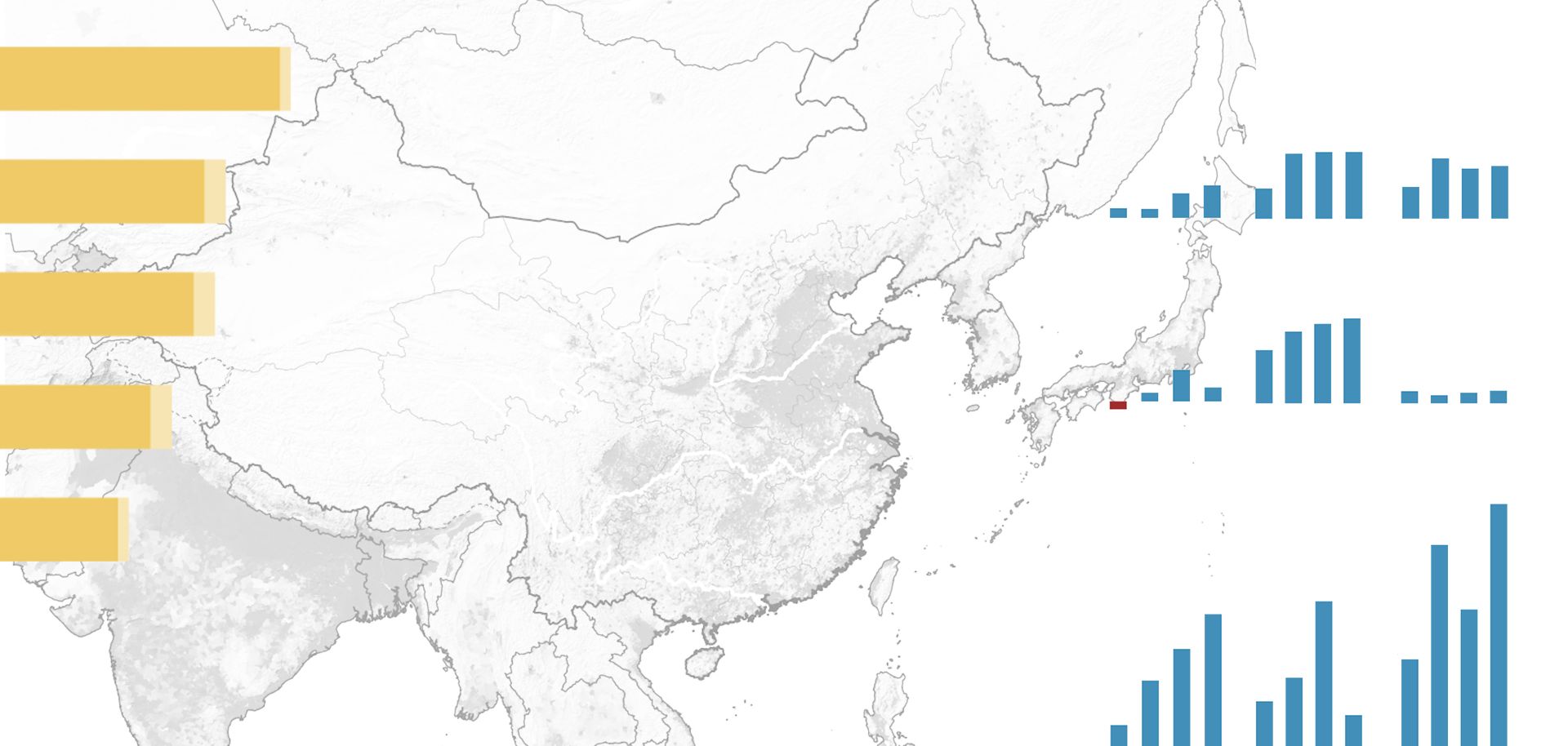
Because of its massive river systems and variety of climates, India is not always the first country that comes to mind when considering water stress issues, but the emerging regional powerhouse is still an agrarian society at its core. This already inefficient sector relies on inconsistent monsoons and, in some locations, on groundwater to make up for years with deficits in rainfall. Increasing urbanization and population growth have compounded demands for municipal water and increased agricultural production. By 2030, India is projected to consume nearly 1.5 trillion cubic meters of groundwater annually — more than its estimated 1.1 trillion cubic meters of usable reserves. As New Delhi faces a major challenge in managing this essential resource, India's highly decentralized system will make it difficult for the central government to effectively manage the problem.
The history of the Indian subcontinent has been shaped by water. To the southeast and southwest, India's coastlines front the Bay of Bengal and the Arabian Sea, while to the north, the Himalayas separate the country from Eurasia. Inside this self-contained world, a multitude of rivers has produced a variety of powerful city centers as well as the internal divisions that have resulted in India's strong regional identities — identities that centralized powers have always struggled to balance. Today, one of New Delhi's core geopolitical imperatives is to control the fertile Ganges River Basin, which is key to maintaining the country's agricultural sector. Agriculture accounted for 18 percent of India's gross domestic product in 2012 and employs about half of the country's population. It also accounted for more than 90 percent of total water withdrawals
The greatest evidence of groundwater depletion can be seen in India's north, an area that includes the fertile Indus and Ganges basins. New Delhi has made this worse by applying only limited regulation to groundwater extraction and by subsidizing electricity, which, among other things, helps makes pumping water more affordable. At the same time, the municipal sector has come to rely on groundwater to meet more than 80 percent of the urbanized population's growing demand.
India's current water withdrawals add up to between 630 billion and 760 billion cubic meters per year, and this is set to expand. India's population is increasing at an average annual rate of roughly 1 percent, and urbanization rates are high, at 31 percent in 2010 and projected to rise to 43 percent by 2035. The government is also working to increase access to electricity and maintain food security, both of which will require steady water supplies. All of this will contribute to a projected rise in annual water demand to nearly 1.5 trillion cubic meters by 2030 — a number higher than India's existing usable water resources (which the government generously estimates to be around 1.1 trillion cubic meters) can meet. By 2030, most of India’s many river basins could face gaps between supply and demand. At the same time, the nation's per capita annual water supply fell to around 1,500 cubic meters in 2011. This is projected to approach the water scarcity line of 1,000 cubic meters per person by 2050.



